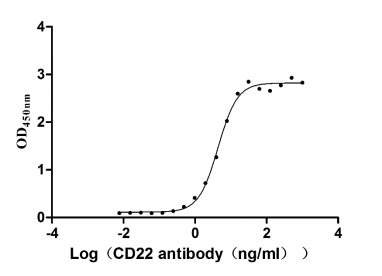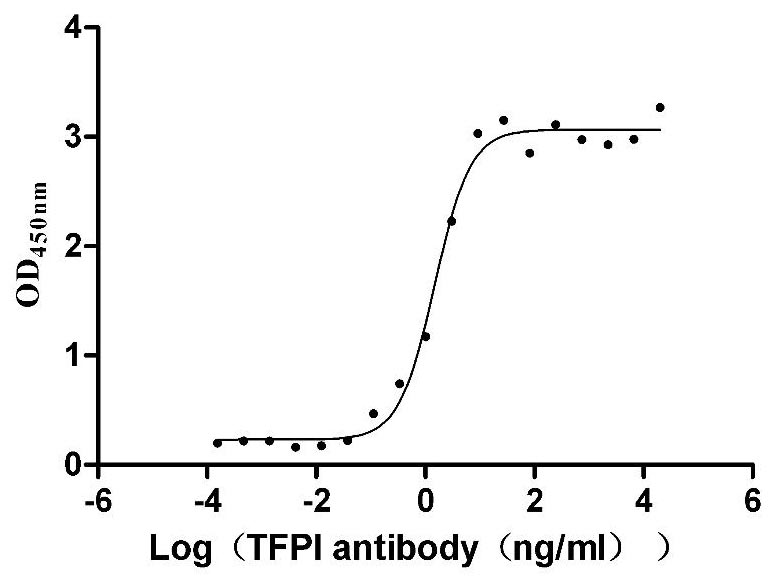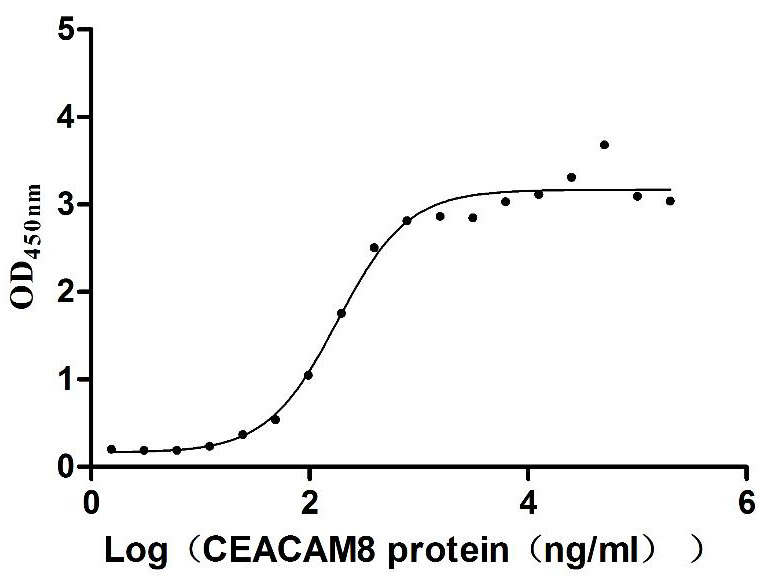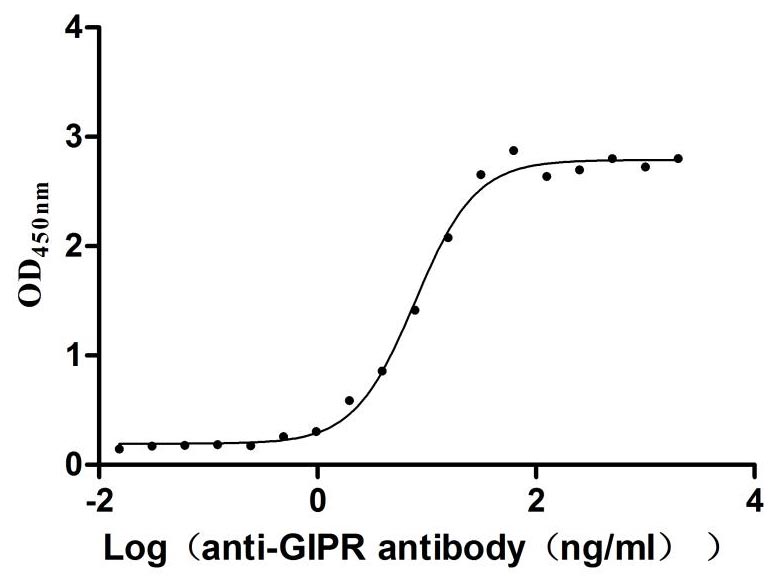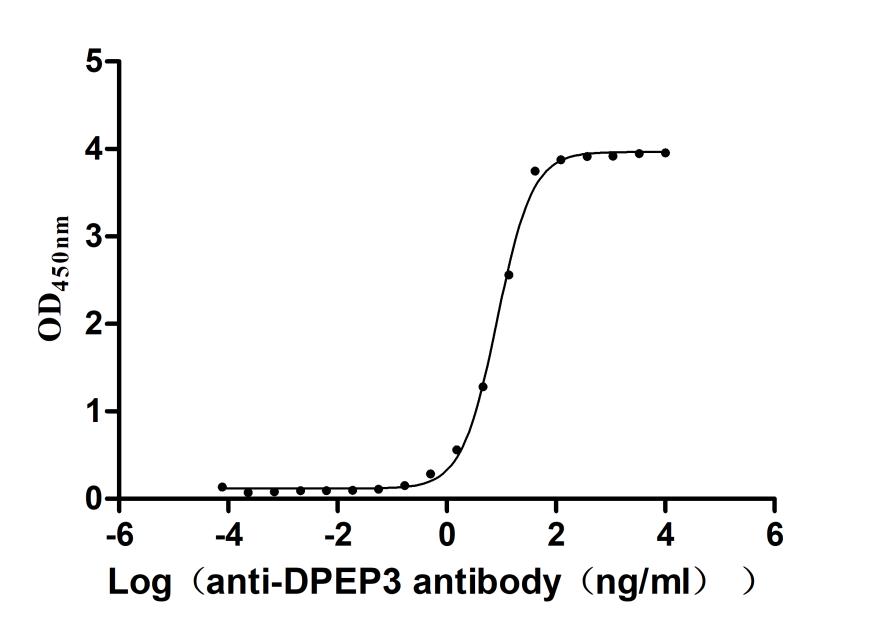Recombinant Mouse Solute carrier family 22 member 5 (Slc22a5), partial
-
中文名稱:小鼠Slc22a5重組蛋白
-
貨號:CSB-YP896672MO
-
規(guī)格:
-
來源:Yeast
-
其他:
-
中文名稱:小鼠Slc22a5重組蛋白
-
貨號:CSB-EP896672MO
-
規(guī)格:
-
來源:E.coli
-
其他:
-
中文名稱:小鼠Slc22a5重組蛋白
-
貨號:CSB-EP896672MO-B
-
規(guī)格:
-
來源:E.coli
-
共軛:Avi-tag Biotinylated
E. coli biotin ligase (BirA) is highly specific in covalently attaching biotin to the 15 amino acid AviTag peptide. This recombinant protein was biotinylated in vivo by AviTag-BirA technology, which method is BriA catalyzes amide linkage between the biotin and the specific lysine of the AviTag.
-
其他:
-
中文名稱:小鼠Slc22a5重組蛋白
-
貨號:CSB-BP896672MO
-
規(guī)格:
-
來源:Baculovirus
-
其他:
-
中文名稱:小鼠Slc22a5重組蛋白
-
貨號:CSB-MP896672MO
-
規(guī)格:
-
來源:Mammalian cell
-
其他:
產(chǎn)品詳情
-
純度:>85% (SDS-PAGE)
-
基因名:Slc22a5
-
Uniprot No.:
-
別名:Slc22a5; Octn2; Solute carrier family 22 member 5; High-affinity sodium-dependent carnitine cotransporter; Organic cation/carnitine transporter 2
-
種屬:Mus musculus (Mouse)
-
蛋白長度:Partial
-
蛋白標簽:Tag?type?will?be?determined?during?the?manufacturing?process.
The tag type will be determined during production process. If you have specified tag type, please tell us and we will develop the specified tag preferentially. -
產(chǎn)品提供形式:Lyophilized powder
Note: We will preferentially ship the format that we have in stock, however, if you have any special requirement for the format, please remark your requirement when placing the order, we will prepare according to your demand. -
復溶:We recommend that this vial be briefly centrifuged prior to opening to bring the contents to the bottom. Please reconstitute protein in deionized sterile water to a concentration of 0.1-1.0 mg/mL.We recommend to add 5-50% of glycerol (final concentration) and aliquot for long-term storage at -20℃/-80℃. Our default final concentration of glycerol is 50%. Customers could use it as reference.
-
儲存條件:Store at -20°C/-80°C upon receipt, aliquoting is necessary for mutiple use. Avoid repeated freeze-thaw cycles.
-
保質(zhì)期:The shelf life is related to many factors, storage state, buffer ingredients, storage temperature and the stability of the protein itself.
Generally, the shelf life of liquid form is 6 months at -20°C/-80°C. The shelf life of lyophilized form is 12 months at -20°C/-80°C. -
貨期:Delivery time may differ from different purchasing way or location, please kindly consult your local distributors for specific delivery time.Note: All of our proteins are default shipped with normal blue ice packs, if you request to ship with dry ice, please communicate with us in advance and extra fees will be charged.
-
注意事項:Repeated freezing and thawing is not recommended. Store working aliquots at 4°C for up to one week.
-
Datasheet :Please contact us to get it.
靶點詳情
-
功能:Sodium-ion dependent, high affinity carnitine transporter. Involved in the active cellular uptake of carnitine. Transports one sodium ion with one molecule of carnitine. Also transports organic cations such as tetraethylammonium (TEA) without the involvement of sodium. Also relative uptake activity ratio of carnitine to TEA is 11.3.
-
基因功能參考文獻:
- Both mRNA and protein levels of OCTN2 were detected in kidney after exercise and during recovery, suggesting renal transport mechanisms were stimulated. These changes were accompanied with a reciprocal increase in PPARalpha protein expression. PMID: 28668962
- There was increased apoptosis in gut samples from OCTN2(-/-) mice. PMID: 23112839
- Colon OCTN2 gene expression is up-regulated by peroxisome proliferator-activated receptor gamma in humans and mice and contributes to local and systemic carnitine homeostasis. PMID: 20558736
- OCTN2, a transporter that is thought to be responsible for the accumulation of L-carnitine in the epididymal lumen, is regulated in response to changes in tonicity. PMID: 19899138
- Mouse OCTN2 is a direct target gene of PPARalpha and transcriptional upregulation of OCTN2 by PPARalpha is likely mediated via PPRE1 in its first intron. PMID: 19819229
- acetyl-L-carnitine is transported from blood to brain extracellular fluid by OCTN2 PMID: 14595704
- placental OCTN2 is obligatory for accumulation of carnitine in placenta & fetus, fatty acid beta-oxidation enzymes are expressed in placenta & reduced carnitine levels upregulate expression of short-chain L-3-hydroxyacyl CoA dehydrogenase in placenta PMID: 15240869
- Novel OCTN2 in mouse pancreas. PMID: 15896819
- OCTN2 functions as a carnitine transporter between the epithelium and the lumen in distal corpus and cauda epididymides and provides a clue as to why obstructive azoospermia is induced in distal parts of epididymis. PMID: 16734862
- These findings indicate that OCTN2 is predominantly responsible for the uptake of carnitine from the apical surface of mouse small intestinal epithelial cells. PMID: 16754783
- This distribution may play a role in the pattern of neurological injury that occurs in hOCTN2 deficiency during catabolic episodes of hypoglycemic, hypoketotic encephalopathy and which may manifest with cognitive impairment, hypotonia and seizures. PMID: 17576045
- PPAR alpha-activation results in enhanced carnitine biosynthesis and OCTN2-mediated hepatic carnitine accumulation PMID: 17692817
- PPARalpha up-regulates the expression of Slc22a5 in small intestine. PMID: 17978498
- shows that transcriptional upregulation of OCTN2 and OCTN3 in tissues and of enzymes involved in hepatic carnitine biosynthesis are mediated by PPAR alpha PMID: 18296741
- PDZK1 regulates two intestinal transporters, Slc15a1 and Slc22a5, as an adaptor protein for these transporters and affects oral absorption of their substrates. PMID: 18322073
- OCTN2 is functionally expressed on the plasma membrane of muscle cells and is involved in distribution of carnitine to the heart. PMID: 18574325
- Octn1, -2, and -3 are expressed in many regions of murine heart PMID: 19233567
顯示更多
收起更多
-
相關(guān)疾?。?/div>Defects in Slc22a5 are the cause of the juvenile visceral steatosis (JVS) phenotype. JVS is an autosomal recessive animal model of systemic carnitine deficiency.亞細胞定位:Apical cell membrane; Multi-pass membrane protein. Note=Colocalizes with PDZK1 on apical membranes of kidney proximal tubules.蛋白家族:Major facilitator (TC 2.A.1) superfamily, Organic cation transporter (TC 2.A.1.19) family組織特異性:Widely expressed. Expressed in kidney, liver and testis.數(shù)據(jù)庫鏈接:
Most popular with customers
-
Recombinant Human B-cell receptor CD22 (CD22), partial (Active)
Express system: Mammalian cell
Species: Homo sapiens (Human)
-
Recombinant Human Tissue factor pathway inhibitor (TFPI), partial (Active)
Express system: Mammalian cell
Species: Homo sapiens (Human)
-
Recombinant Human Carcinoembryonic antigen-related cell adhesion molecule 6 (CEACAM6) (Active)
Express system: Mammalian cell
Species: Homo sapiens (Human)
-
Recombinant Rat Gastric inhibitory polypeptide receptor (Gipr), partial (Active)
Express system: Mammalian cell
Species: Rattus norvegicus (Rat)
-
Recombinant Macaca fascicularis Dipeptidase 3(DPEP3) (Active)
Express system: Mammalian cell
Species: Macaca fascicularis (Crab-eating macaque) (Cynomolgus monkey)


